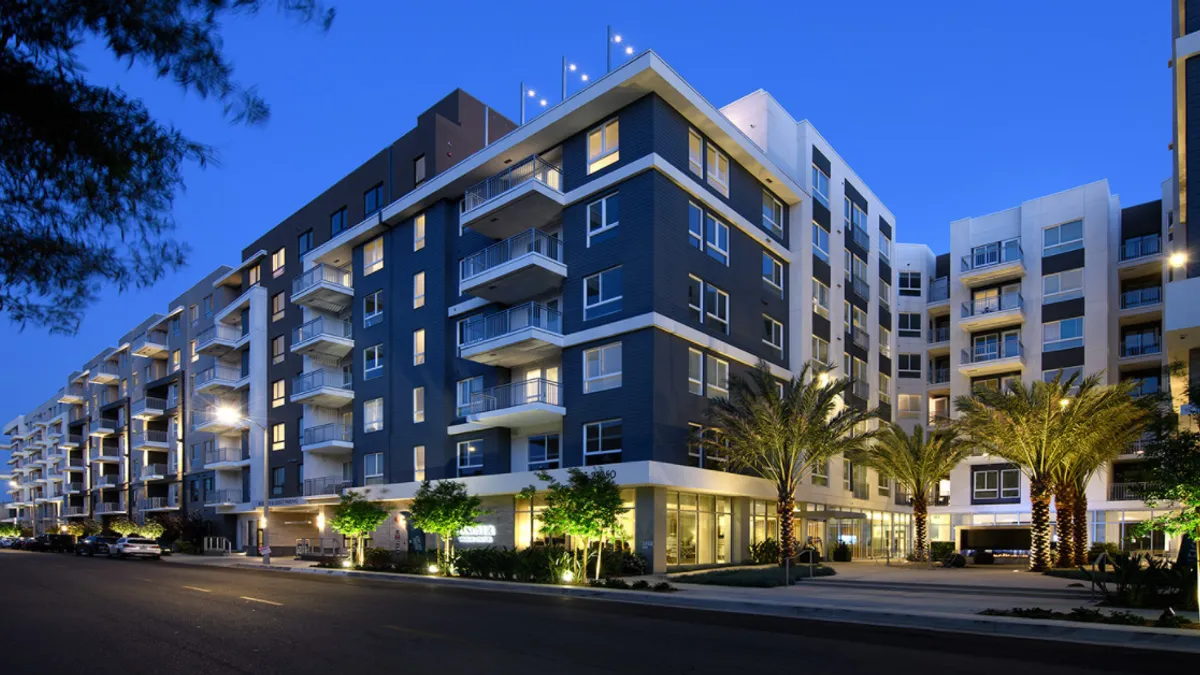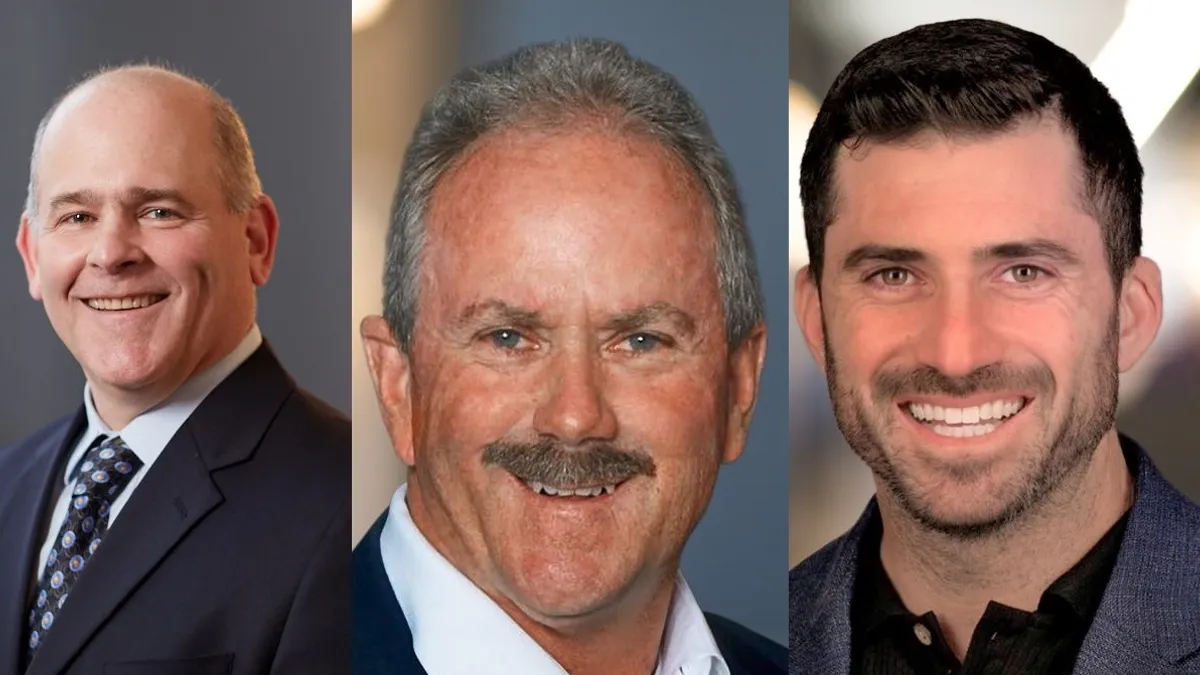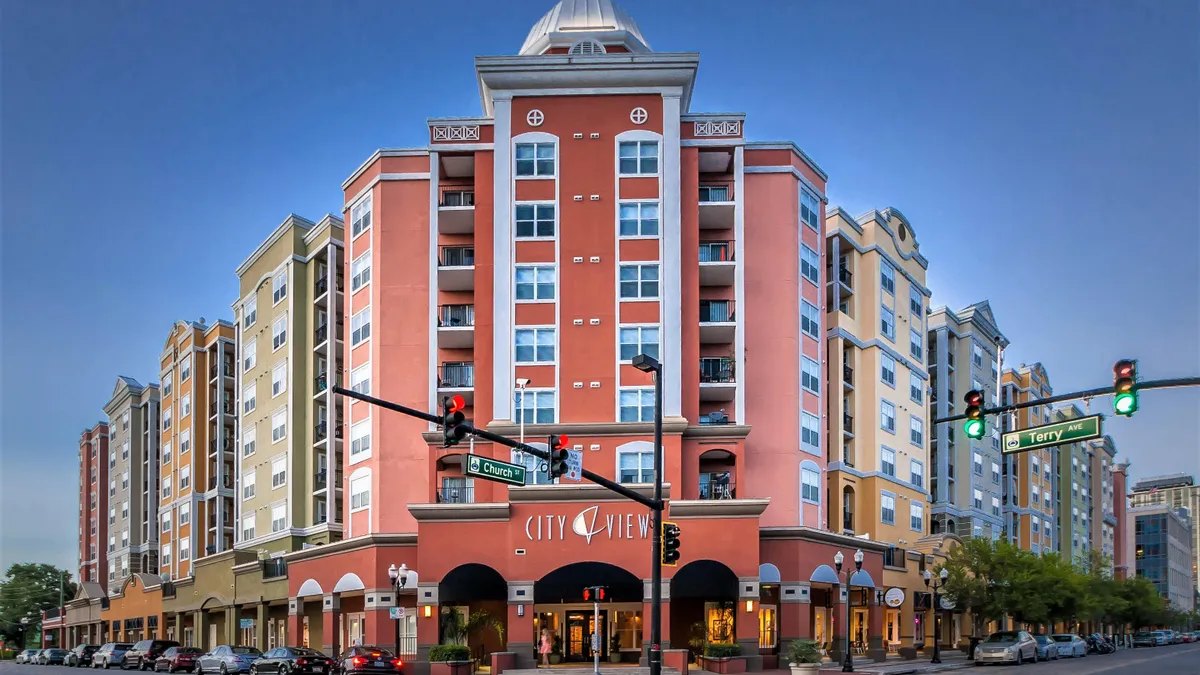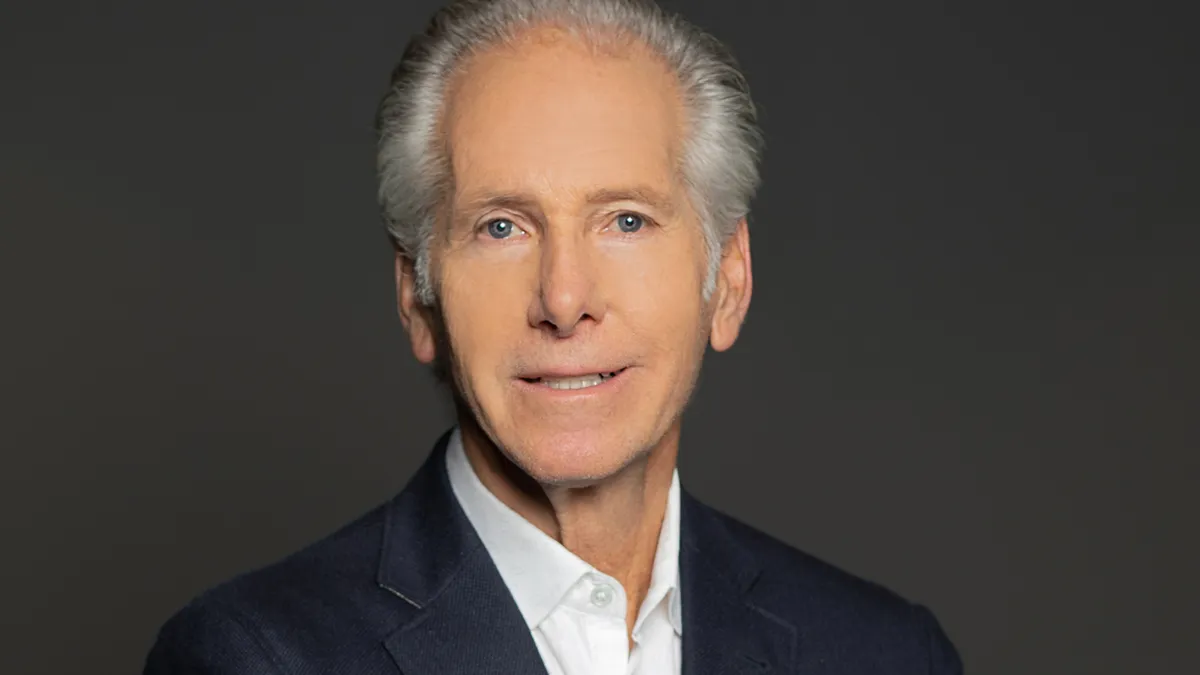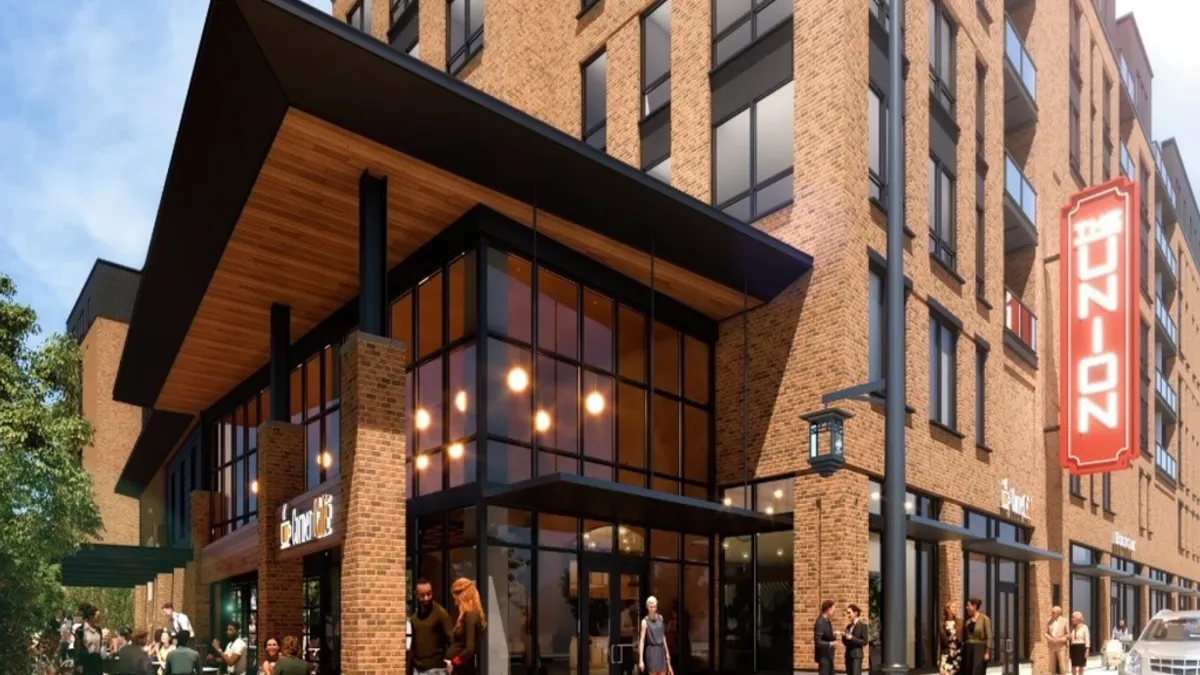On March 1, Lili Dunn didn't just become the CEO at Bell Partners, making her the first woman in that role and one of the highest-ranking women in the U.S. apartment industry. She also became the first non-Bell to hold that title in the company's 45-year history.
Dunn's ascension at the Greensboro, North Carolina-based apartment owner was a "deliberate succession plan," she told Multifamily Dive. She outlined a list of goals that included attracting and retaining talent; ensuring teams have the necessary resources, especially in the areas of customer experience; technology and data analytics; and nurturing relationships with partners and clients.
Dunn takes the helm at Bell at a pivotal time. While many apartment owners saw record rent increases over the past year, there are plenty of threats on the horizon. Investors are paying record prices for apartments, leading some to wonder if pricing is sustainable. Pandemic-related issues, including labor shortages, still linger, while the war in Ukraine creates more economic uncertainty.
Dunn talked to Multifamily Dive about the company's acquisition focus, retaining talent and threats the industry faces.
This interview has been edited for brevity and clarity.
MULTIFAMILY DIVE: Do you think prices for apartments are getting too aggressive?
LILI DUNN: Pricing has become very aggressive for apartments. And there's a reason for that. A lot of capital is drawn to apartments because of their long-term, risk-adjusted returns and ample and relatively attractive financing. There are strong supply-demand fundamentals. Particularly in times of volatility, apartments are defensive. So there is a lot of capital pointing toward apartments, which creates these pricing conditions.
We are seeing some competitors that are certainly chasing yield and rationalizing more creative underwriting standards. However, we remain focused on staying disciplined, very carefully assessing price risk, staying focused on our strategy and our core competencies and investing in quality assets and locations. Frankly, that's really paid off, particularly in the depths of the pandemic.
How are you looking at acquisitions and dispositions right now?
We have been an aggressive and opportunistic seller and a judicious buyer. Last year, we completed almost $4.8 billion of transactions — $2.8 billion was acquisitions (including Bell Warner Center in Los Angeles, pictured above) and $2 billion was dispositions.
The markets with the highest demand have been in suburban areas, particularly in the Sun Belt. However, we are becoming even more cautious of overheated conditions there. There is intense buyer demand and we're seeing some pockets of oversupply that could dampen returns.
So to be a little contrarian, we're also looking at quality assets in some urban micro-locations that have access to deep employment drivers and transportation hubs, particularly with rising gas prices. We're seeing a rebound there and I think there could be some more interesting buying opportunities since the cash flow has been a little bit depressed.
What urban markets are you focusing on?
San Francisco, which is still at pre-COVID rents, could be interesting. There are some infill areas in Denver and there are infill areas in Boston. So it would be largely in the non-Sun Belt areas because they're lagging the recovery. And those markets now generally are starting to catch up, particularly urban locations in those markets.
You mentioned oversupply. Are there any specific markets that you're concerned about there?
Obviously, the growth markets [in the Sun Belt] are growing in terms of employment and population and supply. When you look at supply, you really have to look at it as a percentage of total inventory. You have to also map the supply against the employment growth. So you can look at absorption.
For example, Austin has a ton of supply, but it also has one of the largest employment growth rates in the country and our rent growth there is in double digits, despite the supply. So in any market there are nuances, and that's why I think it's so important that you have the data analytics combined with people on the ground and local experience to be able to guide you.
What potential issues are out there that could become bigger concerns over the next six months or year?
The effect of these geopolitical events is certainly a concern. We're watching that very carefully. Staffing is tough. There's a labor shortage and it's hard to continue to retain and attract great talent. So that's why I'm super focused on our culture and developing and retaining our people.
We're watching interest rates and their effect on pricing and making sure that we're carefully assessing and pricing in risk appropriately.
How are you dealing with labor issues?
It's harder [than ever] to attract and retain a great team. We've spent a lot of my time on initiatives for attracting, developing and retaining talent, as well as creating and encouraging intentional acts to foster our culture, which is based on caring and results.
We're focused on creating an environment where everyone feels that they are included and inspired to make a difference.
What opportunities do you see out there?
There are a lot of great opportunities. I'm thrilled to embrace ESG [environmental, social and governance] issues. I'm passionate about all three areas. We've very proud of our progress on diversity and inclusion. Over 50% of our associates are people of color, and probably what's even more unusual is that almost 60% of our officers, which is vice president and above, are women.
Click here to sign up to receive multifamily and apartment news like this article in your inbox every weekday.



